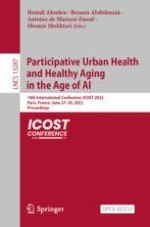1 Introduction
2 Method
2.1 Focus Group Interview (FGI)
2.2 Participants
No | Dx | Type of impairment (complete/incomplete) | Age (years) | Duration of disability (years) |
|---|---|---|---|---|
A | SCI diplegia | Complete | 40 | 19 |
B | SCI diplegia | Complete | 58 | 21 |
C | SCI diplegia | Incomplete | 52 | 30 |
D | SCI diplegia | Incomplete | 51 | 25 |
E | SCI diplegia | Incomplete | 41 | 14 |
